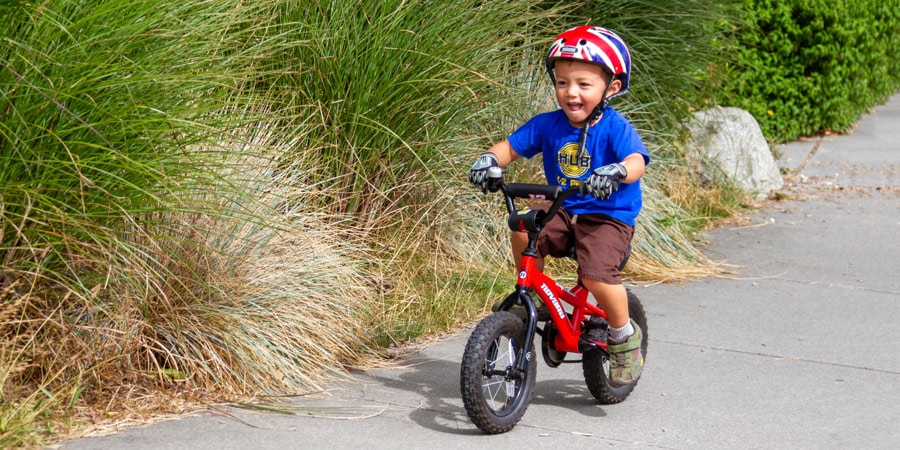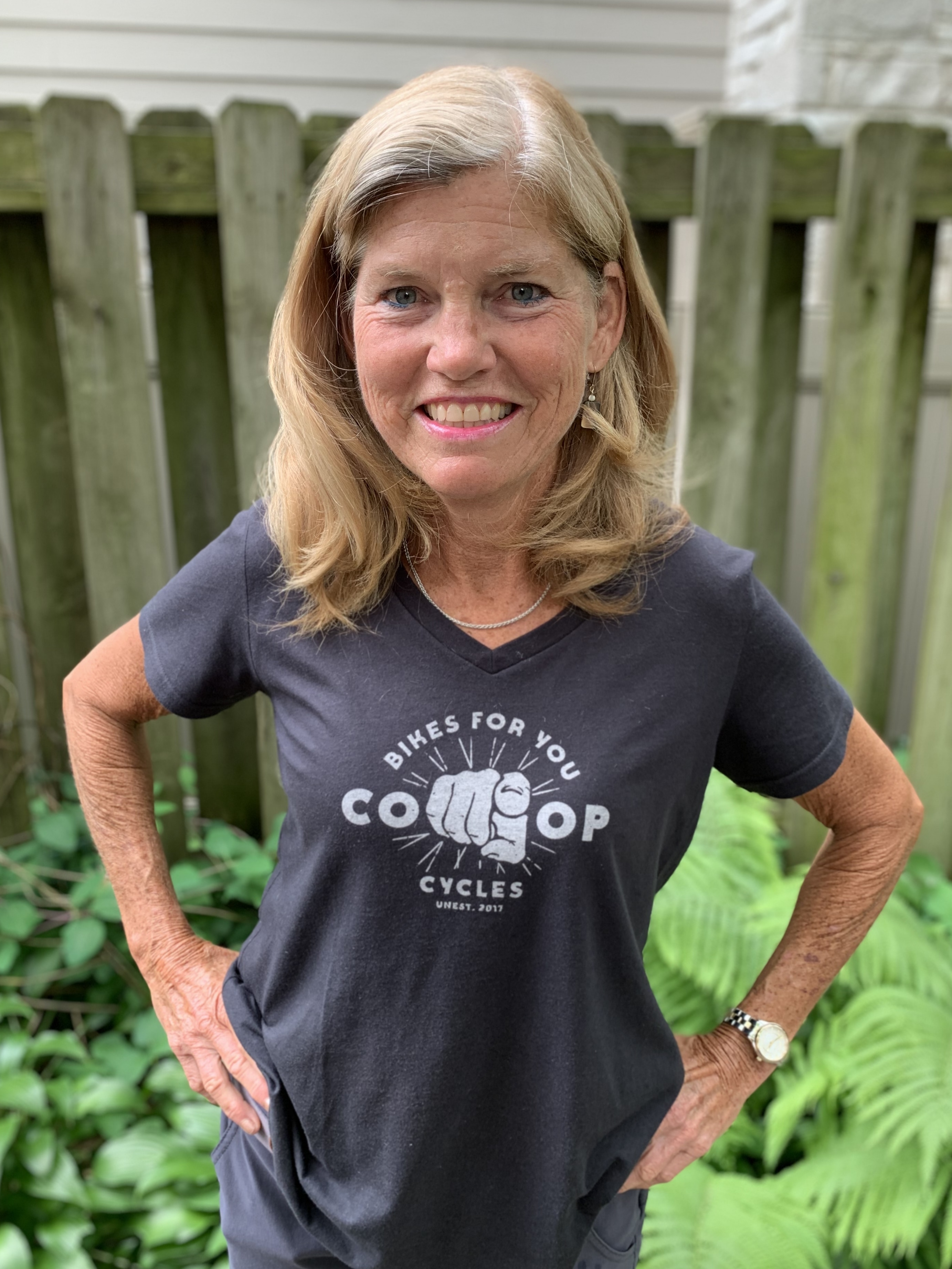Learning how to ride a bike is a rite of passage and a lifelong skill. Many of us still recall the feeling of freedom and accomplishment when we coasted on two wheels for the first time.
In this article, we'll guide you through the steps to teach a child how to ride a bike, including:
- How to determine if your child is ready to ride
- Make sure you have a proper bike and safety gear for the lessons
- Teach a child to balance and coast without pedals
- Teach a child to start, stop and make turns while pedaling
The method we outline in this article is only one approach to teaching bike riding, and every rider proceeds at their own pace.
First, here are some general tips for teaching a child to ride a bike:
- Reinforce success to help the child build confidence.
- Be patient and don't try to force the process: Your child may not be pedaling right away but with continued practice, they'll get it. Take a break and come back to it.
- Pay attention to signs you should stop and rest.
- Remember that children learn differently and may respond to some methods better than others. Learn what works and adapt as needed.
- Above all, keep it fun.
Video: How to Teach a Kid to Ride a Bike
Getting Ready to Ride
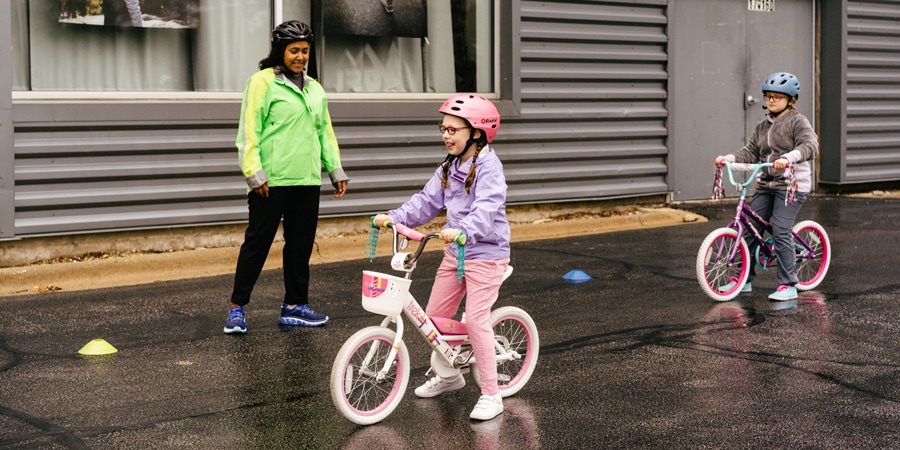
When Is a Child Ready to Ride a Bike?
There's no right or perfect age to learn to ride a bike. The timing will depend on the child's physical and mental development, comfort level and coordination. If they don't have the strength to pedal, you can either wait until they're bigger, or you can introduce them to balance bikes, which let them get a feel for coasting and balancing by pushing the bike along with their feet. Even very small children can get started this way.
The biggest factor, however, will be whether they want to learn to ride a bike. If you think they "should" learn to ride but they don't express any interest, you may want to wait until they are ready. At REI, our classes teach kids how to ride a bike starting from age 5 and up, though many kids start much later.
Make Sure Your Child's Bike Fits Properly
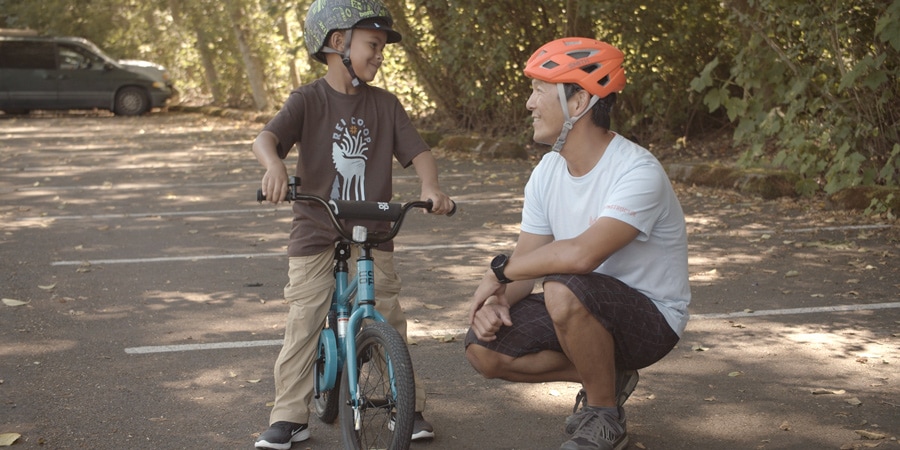
It's critical to find a bike that fits your child. Make sure they can stand over the top tube with both feet planted on the ground. Avoid getting a bike that is too large, hoping your child will grow into it, because it will be harder for them to handle and control. (A slightly smaller bike is preferable to one that is too big.) Many kids worry about falling when they first learn to ride a bike; if they're able to step down when they need to, this will ease some of those concerns.
Check the reach—that's the distance from the bike seat to the handle bars. The child should be able to reach the handlebars without leaning too far forward. If the bike has hand brakes, make sure the child can comfortably reach and squeeze them.
For tips on choosing a kid's bike, see our article How to Choose Kids' Bikes.
Make Sure Your Child Has a Proper Helmet
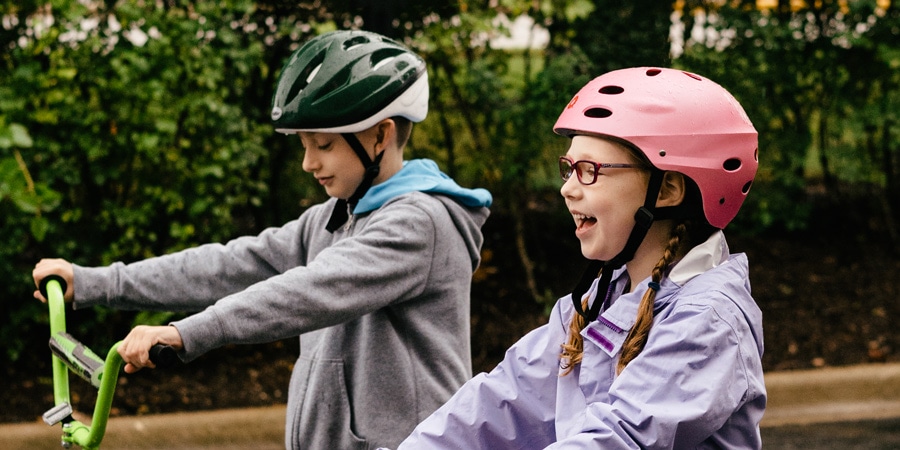
Your child should wear a bike helmet every time they ride, even if it's just down the street or around the school blacktop. To protect your child's head from serious injury, make sure you get a helmet that fits and is also worn properly.
Here are tips for getting the proper bike helmet fit:
- The helmet should sit level across the middle of the child's forehead, no more than 1" above the eyebrows. If the helmet sits high on the forehead or moves more than 1" when you push the helmet from side to side or front to back, adjust the fit or try a different size.
- Adjust the side straps so that they form a "V" as the straps rest under each ear.
- Buckle the chin strap, making sure it's snug. You should only be able to slip one or two fingers between the strap and chin. The helmet should not rock back and forth on the head.
You might also consider gloves, elbow and shin guards, knee pads and closed-toe shoes. Be sure shoelaces are tucked out of the way and avoid loose pant legs. Have them wear long socks or pants, because sometimes the pedals and crank arms may smack their ankles.
For more information, read our article on How to Choose and Fit a Bike Helmet.
Preparing the Bike for Lessons
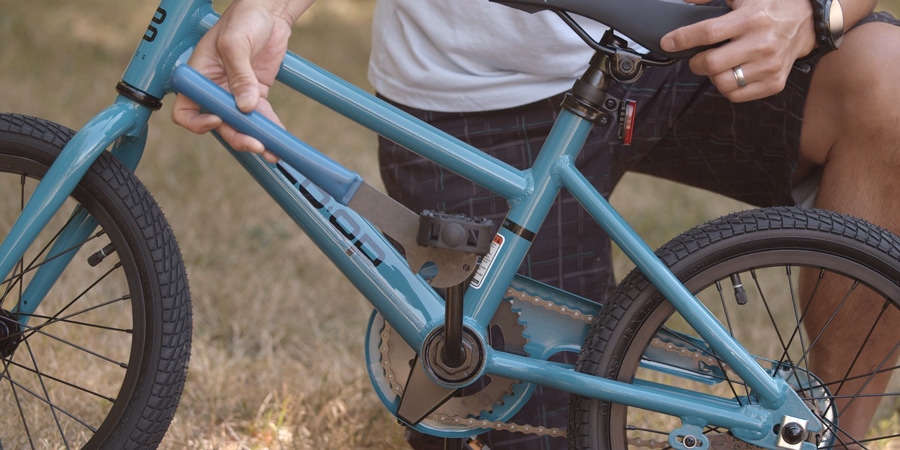
This method for teaching a child to ride a bicycle emphasizes balancing on two wheels first and adds pedaling later. Generally, kids who start on a balance bike tend to have an easier time learning to ride a bike than those who start on training wheels. Balance bikes are designed to get your kids to practice balance first, but it's easy to modify a standard child's bike as well:
- Remove training wheels. Training wheels help kids get accustomed to sitting on a bike and using their legs to pedal, but they don't help them learn to balance.
- Remove the pedals and lower the seat: This allows kids to sit upright with a slight bend in their knees and their feet flat on the ground. The goal is to help them feel more comfortable and steadier as they begin to learn balance. (Note: Pedals can be removed most easily using a pedal wrench.)
- Properly inflate the bike tires. The bicycle will roll more smoothly and your child will have an easier time coasting when bike tires are inflated to the correct pressure. Look for the recommended tire pressure printed on tire sidewalls.
Where to Teach Bike Riding
Find a traffic-free paved area that is large, flat and smooth such as an empty tennis or basketball court or a school blacktop. Avoid narrow trails and short driveways because you don't want kids to worry about going off the pavement. Grassy areas are also tougher because kids can't get enough speed on them to learn to coast and glide.
Learning to Ride a Bike Without Pedals
Here are the basic steps for starting your child's bike-riding lessons:
Practice Getting On and Off the Bike
It's an often-overlooked step, but some kids may need practice getting on and off a bike. Encourage them to do it several times so they're comfortable. Lean the bike on one side toward them to make it easier if needed.
Learn to Scoot and Glide
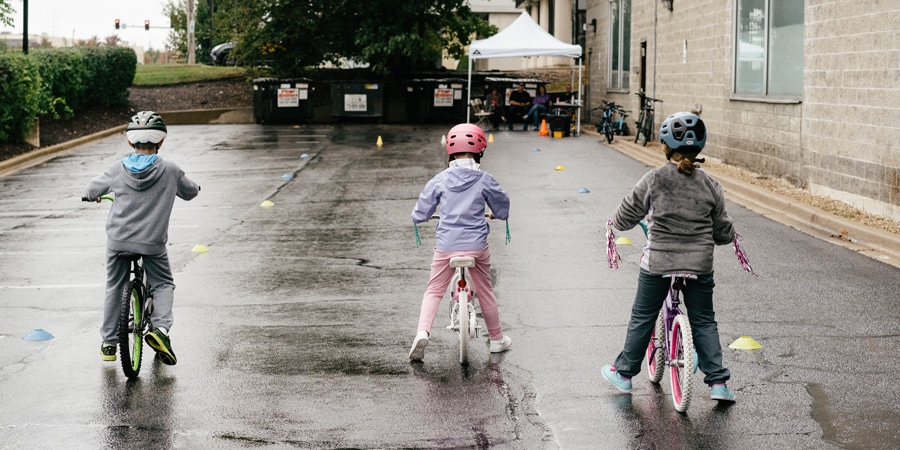
Have the child sit on the pedal-less bike, hold the handlebars and walk back and forth across the practice area while seated on the bike. Ask them to try two different ways to scoot to see which is more comfortable:
- Bouncy house/moon walk: You don't want them to shuffle their feet, so encourage them to take long steps one foot at a time, as they may do when walking inside a bouncy house. Try to get them to take long, running style "moon walk" or "bouncy house" steps to get the feet going.
- Hops: Have them push off using two feet at the same time.
As they practice scooting and coasting, encourage them to look forward rather than down at their feet. If they look up, they tend to stay upright. To practice this, hold up different numbers of fingers as you walk backwards in front of them and have them shout out the number as they scoot toward you.
Once they're adept at scooting the bike, challenge them to pick up their feet and glide, increasing the distance they can keep their feet off the ground. You might hop on your own bike first and show them how to glide with legs outstretched as counterbalances. Younger kids may need to be reminded to stay seated (you won't be able to lift your feet to glide if you're not seated).
Here are two fun ways to practice gliding:
- Hot lava: Using sidewalk chalk, draw a set of lines about 10 feet apart on the pavement and draw flames of "hot lava" in between those lines. Tell the kids to get some speed going so they can pick up their feet when they glide over the "hot lava" without putting their feet down. You can make the "hot lava" extend farther as they progress.
- Timed glide: Count to 10 and see if your child can glide with feet up for the full 10 seconds. Gradually add more time as they gain confidence (try singing the ABCs while they coast with their legs off the ground and see how far they can get).
Steering and Turning While Gliding
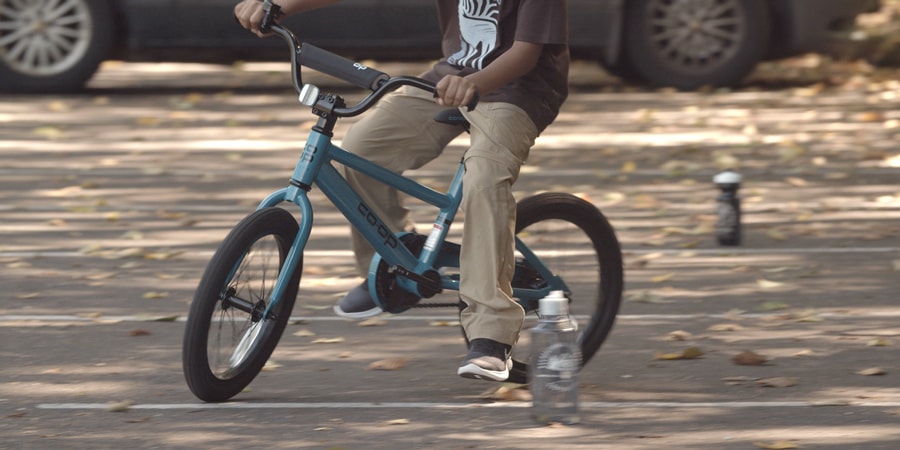
Once kids have mastered the ability to scoot and glide on the bike—and they are enjoying themselves—move on to turning and steering. Start with big, easy, looping turns.
Practice steering and gliding with easygoing games:
- Easy obstacle course: Set up some orange safety cones in a pattern and have your child practice steering between them.
- Play "follow the leader": Get on your bike and have the child follow you. (Remember to wear your own helmet.) Take it slow and easy and make big turns every now and then.
Learning to Ride a Bike with Pedals
Once the child can coast on the bike with feet up, make turns while coasting and look ahead while riding, it's time to put the pedals back on the bike. For now, keep the seat in its lowered position so your child can still put both feet on the ground to stop.
Pedal Awareness
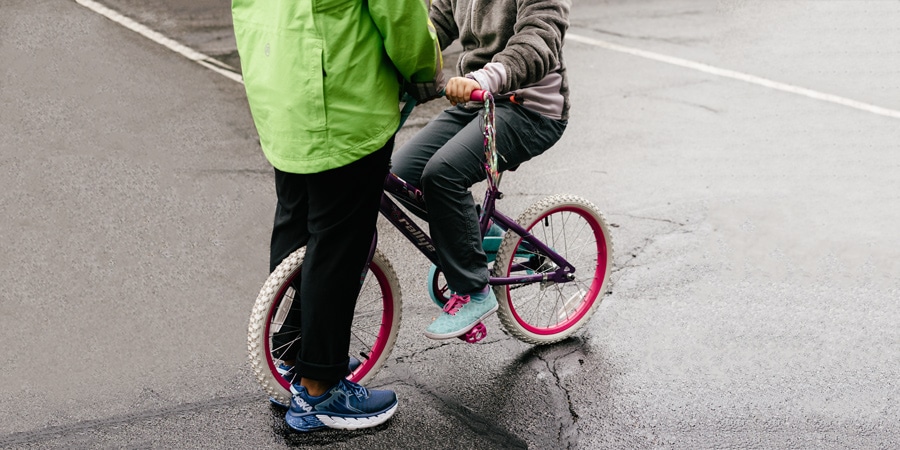
Next, you'll want the child to get used to picking up their feet and finding the pedals. To help them do this, hold the handlebars as you face the child who is seated on the bike. Have them practice picking up their feet and putting them on the pedals while looking at you or looking ahead. (If they look down at their feet, they're more likely to turn the handlebars and get out of balance).
- Face the child while holding the handlebars. Tell them to focus on the top of your helmet. Tell them that when you say "hot Lava" they put their feet on the pedals while still looking forward (while you hold them so they don't fall).
Slowing Down and Stopping
Before they start pedaling, you'll want them to get a feel for how much pressure it takes to make the brakes work.
- If they have coaster brakes, hold the bike while they're on it and have them practice gently pressing on the coaster brakes until they can use them without wobbling very much.
- If they have hand brakes, have the child walk alongside the bike holding the hand grips with a couple of fingers on the brakes. Have them use the hand brakes to slow the bike as they walk along.
Starting from a Stopped Position
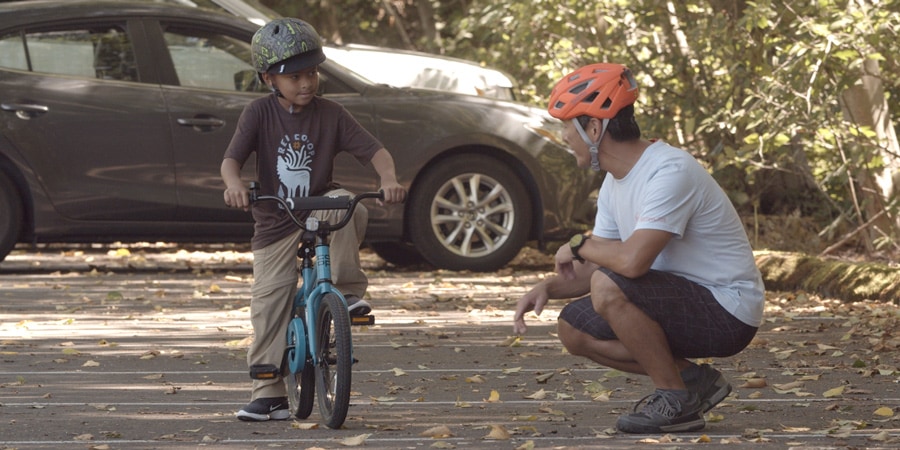
Next, it's time to teach the child how to start moving from a stopped position using pedals. There are several ways to approach this. If the bike has gears, make sure it's in an easy gear. When seated, the child should feel balanced. It'll be much harder to balance when they're getting ready to go.
- Have the child sit on the seat of the bike with one foot flat on the ground and the other on a pedal raised to the 1 to 2 o'clock position. (They won't have enough momentum if the pedal is too level.) Coach your child to press down hard on the front pedal. This pressure will give the bike its forward momentum.
- Another option is to have them start with one foot on a pedal in the down position and use the other foot to scoot, the way you would on a scooter. Take a scooter step to get the speed going and then find the second pedal.
- Using either the long stride scoot technique or the hop, they might try scooting with either both feet or one at a time and then finding the pedals.
Try to avoid holding the child's bike as they start to pedal. You want to give them the opportunity to balance on the bike themselves and to feel confident enough to ride on their own. If the child has trouble getting the feel of it, it may help to hold the bike for a short stretch. If they're not balancing well, and you have to hold the bike for long stretches, they may need more work on balance before they're ready for this step.
Steering and Turning the Bike
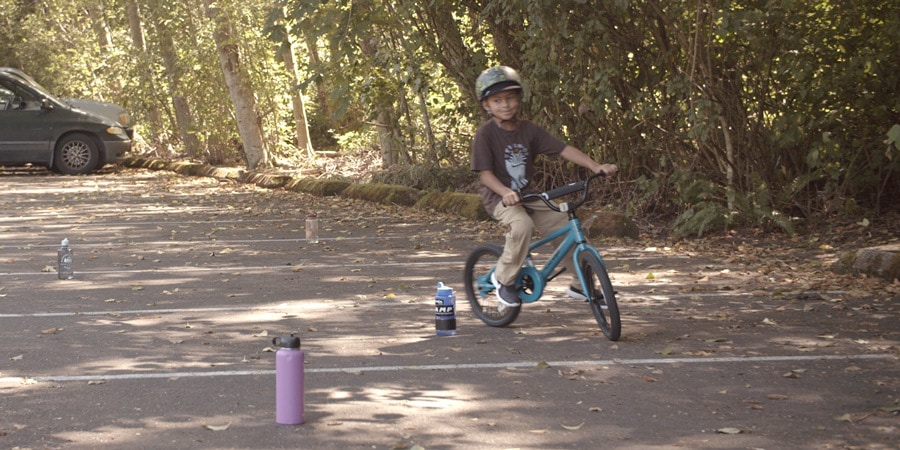
As kids get the hang of pedaling a bike, they can start practicing turns. Encourage your child to do large, wide circles and figure 8's. Have them go wide first and then make the turns smaller. Generally, most people find turning on one side is much easier than the other.
Keep things fun by making a game out of steering and turning:
- Set up a line of cones (or bean bags, or other friendly objects) for your child to navigate. Once simple turns have been mastered, try a more elaborate pattern.
Practice pedaling and braking skills with these games:
- Play "Red Light, Green Light." Vary the distances and encourage ever-faster stops.
- Place a safety cone about 10 to 20 feet ahead on the ground and have your child stop before hitting it.
Once your child has successfully mastered all these skills, you can move on to bike riding as a family outing. See our Expert Advice article Cycling as a Family: Riding Tips for more ideas and suggestions.
